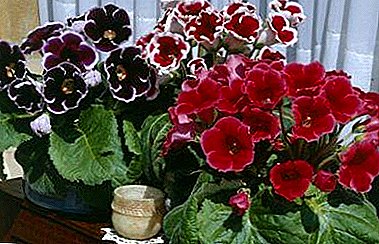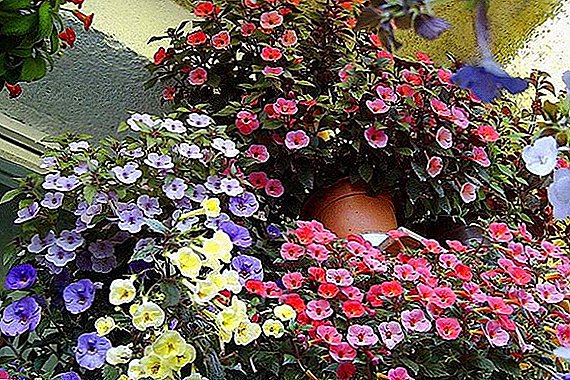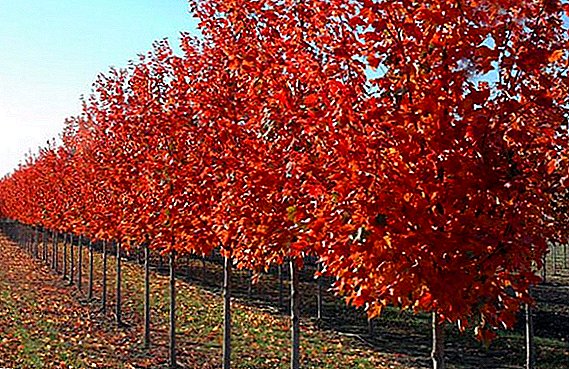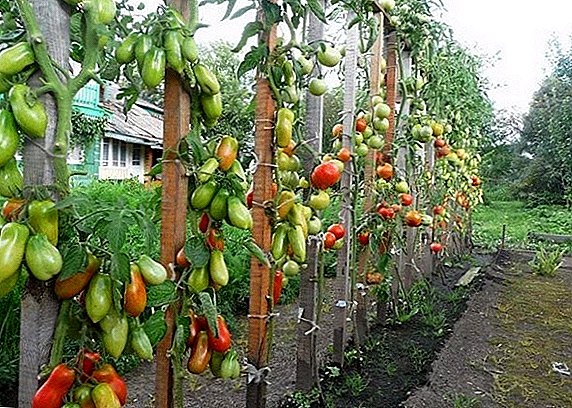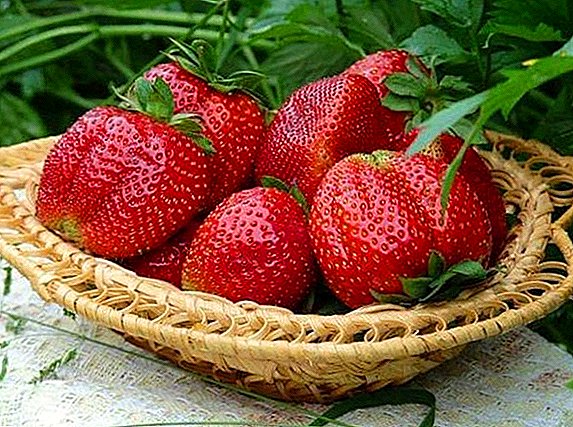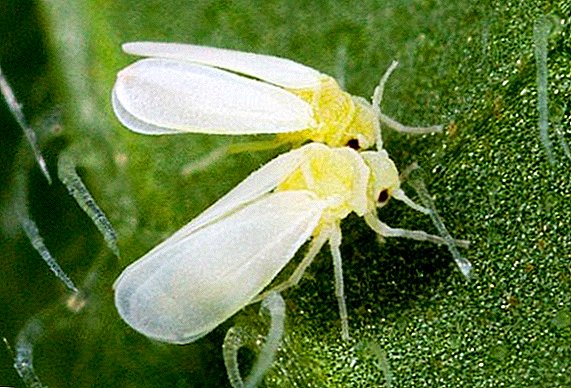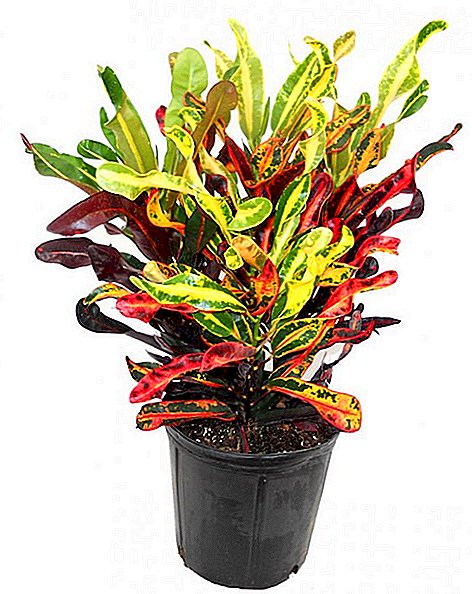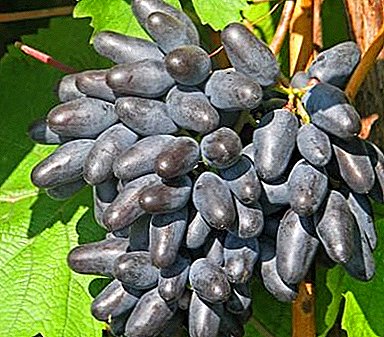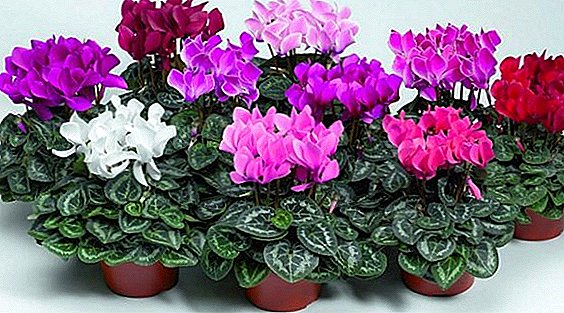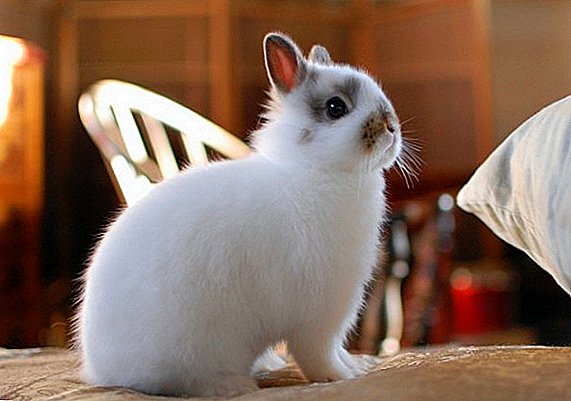 Today, the Dutch ornamental rabbits are considered one of the ten most popular breeds in Europe. These beauties are bred, mainly because of their unusual appearance. This furry creature in the "mask and pants" is a real decoration of the yard or apartment.
Today, the Dutch ornamental rabbits are considered one of the ten most popular breeds in Europe. These beauties are bred, mainly because of their unusual appearance. This furry creature in the "mask and pants" is a real decoration of the yard or apartment.
Breed description
At first, the breed belonged to the meat-skin, and the average weight of individuals reached 5 kg. But with the advent of broiler breeds, the “Dutch”, thanks to their appearance, moved into the category of decorative and became more miniature in size. The unusual exterior of the rabbit and its peaceful nature made him a welcome pet of many farmsteads.
Familiarize yourself with the characteristics of germelin, squirrels, colored dwarf, Viennese blue, lionheaded rabbits.
Inference history
In 1800, when breeding Danish rabbits in their genes mutation occurred. Individuals appeared that were called Polish and crossed with wild rabbits. During the war, the selection work ceased, and after it ended, in 1947, at the exhibition in Amsterdam, individuals were exhibited, which were called Dutch decorative rabbits.

External features
These animals have the following characteristics:
- strong and compact body constitution;
- strong and large (compared to the front) hind legs;
- weight ranges from 1.3 to 1.7 kg, but there are individuals that reach 3 kg;
- A characteristic feature is the coat color: their body is as if divided into two parts - dark back (colors up to 22 shades) and front, white; there may be tricolor specimens, but on the condition of a cross combination (black ear over the red cheek and red ear over the black cheek);
- wool is thick and soft, has an average length, is used for sewing fur coats, vests, finishing fur products;
- the head is small, rounded with a flat face;
- neck is not expressed;
- ears short and upright, well pubescent;
- puffy cheeks;
- besides color, the eye color is also unusual: from brown to gray with blue;
- life expectancy is from 7 to 10 years.
Did you know? Rabbit's big ears help in adjusting the temperature. By wetting them with cool water, you can prevent heat stroke in the animal.
Character
Dutch rabbits have a flexible and calm disposition, love to socialize and are curious. They are distinguished by the presence of intelligence and are amenable to training. Like all relatives, they are shy.  Fluffies do not show signs of aggression, but in a stressful situation they can "show teeth". These are very active creatures, but still it should be remembered that this is not a toy, but a living creature, and it is necessary to behave with it accordingly.
Fluffies do not show signs of aggression, but in a stressful situation they can "show teeth". These are very active creatures, but still it should be remembered that this is not a toy, but a living creature, and it is necessary to behave with it accordingly.
Maintenance and care
Having made the decision to start eagles, you should understand that it will require attention and care. First of all, you need to take care of the acquisition of the cell and its contents.
Did you know? In natural conditions, the teeth of rabbits quickly grind off, so nature has endowed them with a unique property: they grow their whole life.
Selection and arrangement of cells
Rabbit dwelling must meet the following requirements:
- the cage should be spacious, 4 times larger than the pet itself, therefore the dimensions of the dwelling should not be less than 70 × 50 cm;
- since rabbits do not like heat and tolerate cold more easily, for this reason direct sunlight should not fall on the cage so as not to cause overheating;
- the cage should not be in a draft;
- sawdust, hay or straw are used as bedding;
- the water bottle should be well fixed on the side grill so that the pet does not spill water;
- it is better to pick up the feeders so that they cannot be overturned, or to fix like drinkers;
- the cage should also have a toilet and a place to rest.

Care rules
To keep your pet healthy, you need to regularly clean up in its cage. In addition to the daily "cosmetic" cleaning (throwing out food debris, changing the litter and pouring fresh water), you need to carry out a general cleaning at least once a week:
- After transplanting the rabbit to a safe place, throw out the litter and food debris.
- Use a brush with hard bristles for cleaning, and a toothbrush will work for hard-to-reach places.
- Wash the cage with warm water with simple soap or vinegar solution (1 part vinegar to 1 part water). At the end of all you need to rinse well with water.
- When the cage dries out, put all the items in place and cover the fresh litter. Each time, leave a small area uncluttered, as the rabbits mark their home and, without feeling their smell, will worry.
Learn how to make a cage for a decorative rabbit with your own hands.
It is better not to use chemicals for cleaning, because they, remaining on the cage and its contents, can cause animal diseases. 
Vaccinations
To maintain the health of eared pets, they need to carry out preventive vaccinations. A 100% guarantee will not give it, but it will reduce the possibility of disease.
Vaccination is carried out in the following frequency:
- The first vaccine for myxomatosis and hemorrhagic disease is carried out at the age of 45 days with a weight of 0.5 kg (if the weight is less, the vaccine is given later);
- re-vaccinate with the same vaccine at 4.5 months and then every six months;
- rabies vaccinated at the age of 2-2.5 months;
- To prevent a decline in immunity, it is advisable to prevent worms before each vaccination.
Find out what types of diseases occur in ornamental rabbits.
Conducting vaccination, it should be remembered that you can not vaccinate:
- sick animal;
- rabbit with low weight (up to 500 g);
- pregnant or nursing rabbit;
- without the prevention of worms.
Feeding rules
Although the Dutch rabbits are not picky in their diet, it is possible to prolong their life with the help of a properly formulated diet. 
What can you feed
In the menu of animals must be present:
- dry mixes (feed), containing all the necessary vitamins and minerals;
- barley, oats and corn;
- dried grass (200-300 g per day): it improves the movement of food through the intestines and removes blockages from the hairballs that enter the intestines when the animal licks itself;
- dried green dandelion, nettle, sow thistle, wheatgrass, alfalfa, clover and other plants: the more varied the green mass, the better;
- leafy and branch feed (young branches of lime, birch, maple, pear, apple);
- vegetables and fruits (carrots, Jerusalem artichokes, pears, apples, pea pods, etc.);
- brewer's yeast (contain many amino acids, vitamins and biologically active substances);
- salt (special mineral salt stones are on sale);
- fodder chalk.
Important! In the winter, with a lack of fresh green grass, vitamin and mineral supplements should be added to the diet, which favorably affects the wards' immunity.
Animals need to be fed 2-3 times a day.

What can not feed
Decorative rabbits are prohibited from giving:
- wet greens;
- unknown or poisonous plants;
- branches of elder, bird cherry, cherry, apricot, plum and some other trees;
- red beets and cabbage (can cause diarrhea);
- flour and confectionery.
Learn how to care for a decorative rabbit in an apartment, whether it can be washed, how to eliminate the unpleasant smell of a rabbit, how to teach a decorative rabbit to the toilet and hands.
Features breeding young animals
If you are planning to breed rabbits, then you need a pair (male and female). During the year the rabbit can produce offspring from 6 to 9 times. In litter can be from 2 to 15 kids. Mate animals at the age of not earlier than 7 months and not older than 3 years.
With the advent of hunting, the behavior of the rabbit changes. She plucks fluff and becomes nervous. It is necessary to plant a cage to the male. Pregnancy at the rabbit lasts about a month. On the 31st day occurs okrol. Before this, the animal builds a nest of plucked wool.  It is good if the rabbit nurses the babies herself, but this is not always the case. Sometimes you have to feed yourself rabbits from a syringe without a needle (artificial milk is suitable for puppies).
It is good if the rabbit nurses the babies herself, but this is not always the case. Sometimes you have to feed yourself rabbits from a syringe without a needle (artificial milk is suitable for puppies).
Babies eat mother's milk until the age of 18-20 days. At this time, the female should receive good nutrition and an adequate amount of water. From 20 days of age, rabbits are transferred to the "adult" food. For 4 months, babies reach the size of adults, and at 8 months they stop developing.
Important! With a lack of water, the rabbit can eat cubs.Having decided to start a Dutch ornamental rabbit, study all the necessary information about its maintenance and feeding. We hope that our article will help you with this.


